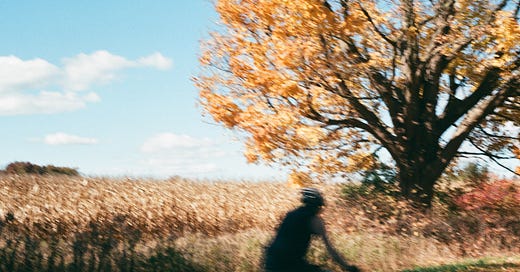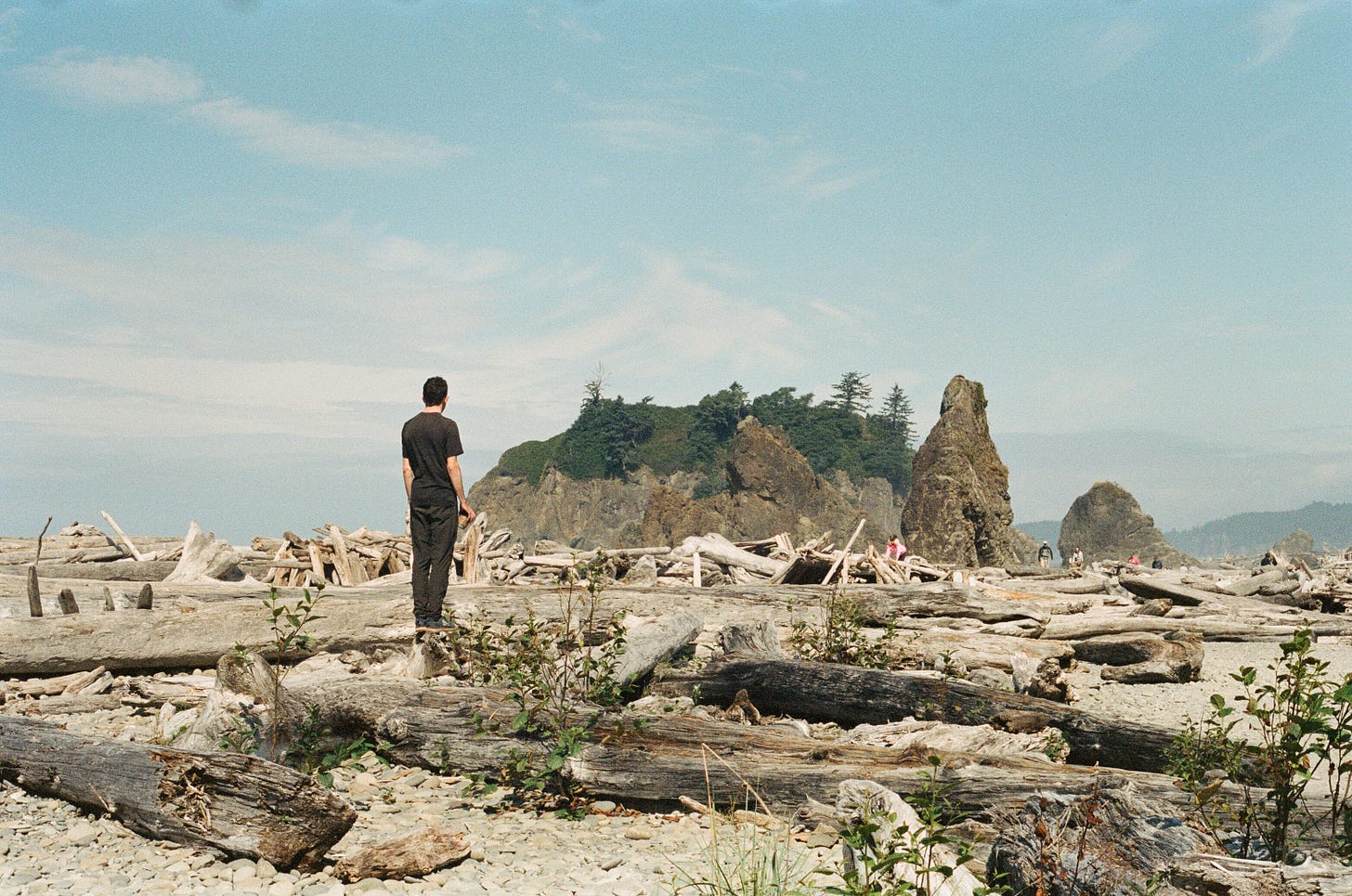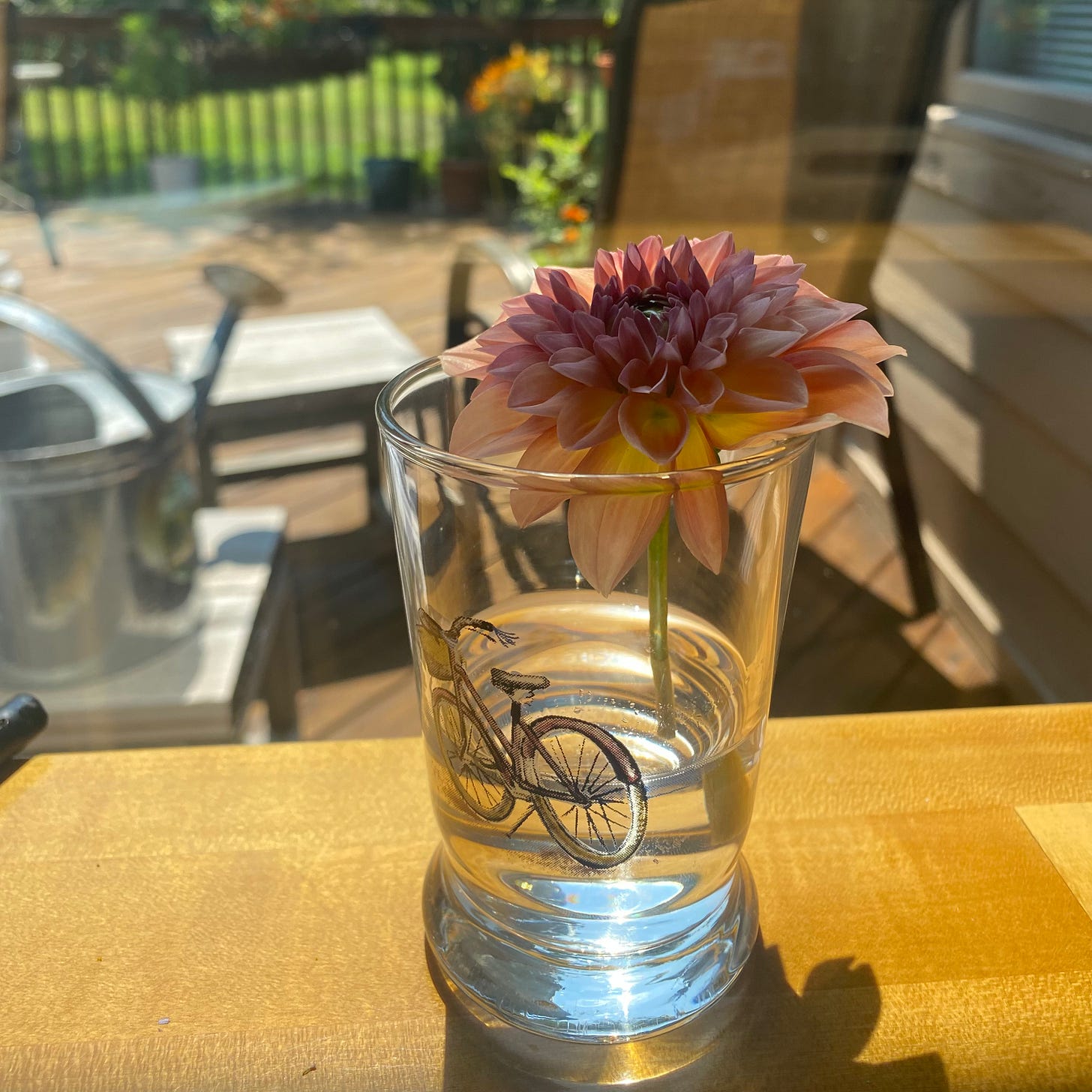Dear reader,
I’ve been riding a bike–outside!-for three months. Early in October, during what I expected to be a routine set of X-rays, the doctor declared me ready for impact and cleared me of all restrictions. I gaped at the news, sure he somehow knew that days before, after one happy hour spent watching commuters sail by, the pull to ride a bike became unbearable. I could practically feel the pavement blurring beneath my wheels. I demanded Jeremy carry a bike downstairs so I could pedal up and down my street because I knew I was ready.
I peppered the doctor with questions–could I fall? Jump? Did I need to come back? Surely there was a catch? Hadn’t I just come to terms with everything taking its slow, sweet time?
So, four months after being hit by a car and five before I was predicted to ride again, I labored up our street in sweeping arcs, trying to wrestle my wheel straight while my feet spun frantically. I clung to the brakes while I soared back down and held my breath as I got reacquainted with the wind. It would only take weeks before I gleefully charged downhill, cackling.
I’ve been wary of writing trite “life lessons” following trauma, I have, however, come up with one rule: stop rushing (and look both ways before crossing the street.) It’s a bland rule, yet it requires monumental effort to maintain. There was no rushing in the wheelchair lest I scuff the walls on my way to the couch. I had no choice but to move carefully, and as I approach “healthy,” I must remember not to rush back into carelessness. This week, my physical therapist asked me to step down the intensity of my training because intervals produce a searing pain in my lower back. I’ve since been fretting that by signing up for ultra-distance events again, I’m setting myself up for frustration and failure, and my first impulse is to ride more to make up for it. I’ve read this story before. It’s stupid. Don’t rush.
Some people will sit with you indefinitely in a hospital. Others need tasks. When a sudden panic about wilted summer plans struck me, I asked my dad to rescue my just-sprouted dahlias. He moved each pot from my second-story deck to his own and began watering them. By the time the plants appeared at my grandparent’s home, my single-story summer residence, the stalks were tall enough to sway in the blistering sun.
The summer was exhausting and boring. Every morning, I eventually gave up on sleep and comfort and began maneuvering out of bed. First, I’d get my elbows beneath me, then shimmy into a sitting position. We celebrated when I first swung my legs over the side of the bed instead of hoisting them with a strap looped around my feet. Once on the edge of the bed, I’d stand on my right leg, grasping the walker, and pivot slowly into the wheelchair. Then, I’d prod the walker across the carpet to the bathroom, where I would reverse the process and pee. The next half hour was spent scraping dead skin out of my open wounds and dressing the external fix.
But once I wheeled into the kitchen, I was free to watch the birds and read for hours before reporting to work from the dining room table. I couldn’t cook or manage the dishes. Some days, I’d prod Jeremy to water the plants after he finished cooking and cleaning. When I felt more ambitious, I’d balance a pitcher on my lap and launch my wheelchair over the screen door threshold. It was a hot, shadeless summer for my dahlias, and more days than not, we were too tired to take care of them.
But somehow, the flowers grew. The buds taunted me for weeks, tight green fists protecting fragile blooms before the petals unfurled. Not as bountifully as I’d hoped, but beautiful nonetheless. All spring, I had imagined tending to the garden, waking each morning and patiently monitoring each plant's needs. As it turned out, my dahlias didn’t need nearly as much minding as I’d romanticized.
It was startling when the doctor suddenly determined that I’d healed enough. I didn’t engage in a frantic protocol to recover quickly, but it happened anyway. For the first month of my physical therapy, I repeated tiny movements each morning for half an hour at most. It felt impossible that it was enough, but I felt exponentially stronger every week. As I dive back into endurance training, the months-long process of riding at an easy pace, I have to trust that this, too, will be enough.
In the days after I was cleared for anything, I felt myself uncoiling and turning towards the sun. When asked how I was, I proclaimed that my PT had a brand-new patient who knew how to crack a joke, even if my jokes were odd and depressing. Sitting on the bike hurt my re-formed sit-bones, but when I felt the pull to feel the world undulate beneath my tires, I could answer it.
Occasionally, someone will congratulate me on healing quickly, implying that I must have earned my solid bones. And while I certainly could have hindered their slow knitting with impatience or a lack of calcium (but really, who with broken bones and a mother nearby can avoid calcium supplements?), there’s not much to commend. I went to PT. I ate enough. I tried to sleep. For reasons I don’t fully understand, other than their favorite refrain of being “young and healthy,” I beat the doctors’ estimates for a return to sport. Who knows if those textbook timelines were ever appropriate for my age and injuries or just generous to keep my hopes tempered? I suppose it’s comforting to imagine we have more control over our fate. But my hope for this year is that I can allow myself to take the time I need.
Don’t rush.
Happy trails,
Mumble
Written on Potawatomi lands.





So happy you have had such a quick recovery! Even though my injury was minor compared to yours I felt like I had a kindred spirit in your writing, another cyclist who was sidelined by injuries. You’re a fantastic writer, thanks for sharing.